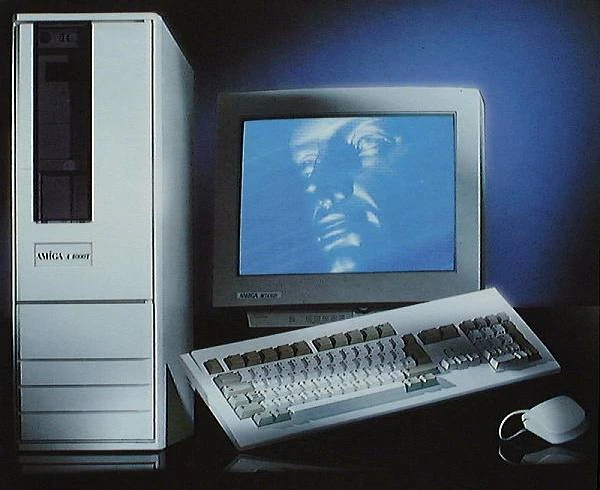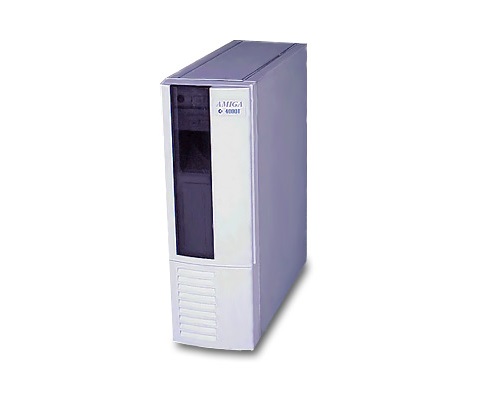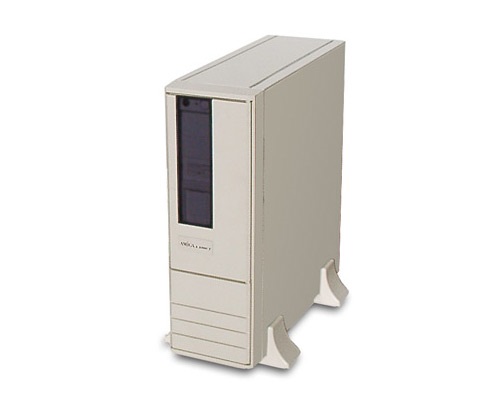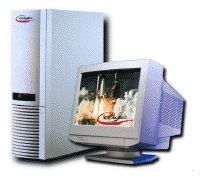Commodore
Amiga 4000T (A4000T)

The Amiga line of computers, which started with the Amiga 1000 in 1985, had built a loyal following over the years. However, by 1992, as PCs were becoming the standard for both business and personal use, Commodore began developing the Amiga 4000T to compete with IBM PCs and Apple's Macintosh. But, by the time the Amiga 4000T was released, Commodore was already facing serious financial difficulties. In April 1994, shortly after its launch, the company filed for bankruptcy. Only a small number of A4000Ts — believed to be in the low hundreds — were produced (at least by Commodore).


After Commodore's bankruptcy, Escom AG, a German computer manufacturer, acquired the Amiga assets in April 1995 and launched a new division called Amiga Technologies. Escom resumed production of the A4000T (with slight modifications), which achieved some success. However, tight margins and strategic mistakes led to insolvency, the company declared bankruptcy in July 1996, just one year after it begun re-manufacturing the A4000T (and the Amiga 1200). Following Escom's collapse, QuikPak, a North American company that was already manufacturing Amiga products (licensed from Escom), continued the production of the Amiga 4000T.


In 1997, Gateway 2000, a U.S.-based company, acquired the rights to the Amiga assets but plans for future Amiga products never materialized. And, despite QuickPak's efforts, they were unable to secure a license from Gateway 2000 to continue manufacturing Amigas. QuickPak ceased production of the Amiga 4000T in 1998, marking the end of the classic line of Amigas. Today, the Amiga 4000T is regarded as one of the best Amiga models ever made, and due to its limited production — especially the models manufactured by Commodore — it has become a highly sought-after collectors item.
Amiga 4000T (A4000T)

ESCOM Amiga 4000T with keyboard and mouse (it was sold without a monitor).
| Amiga 4000T specs | |
|---|---|
| Release date | 1994 |
| Discontinued | 1998 |
| Price | $1,997 USD (1996)
*Note: The 50MHz 68060 processor was an optional upgrade for an additional $700 USD. |
| Processor |
Commodore (1994) 32-bit Motorola 68040 @
Escom (1996) Optional upgrade: 32-bit Motorola 68060 @
|
| Memory |
|
| Display |
Resolutions: 320x256 to 1280x512 Colors: 262,144 from a 16.7 million palette Display Frequency: 15.5KHz/50Hz or 31KHz/60Hz Overscan: supports TV resolutions (768x564) |
| Sound | Digital-to-Analog Converters: 4 Sound Frequency: 8-bit 28 KHz/56 KHz (depending on graphics mode) |
| OS | Amiga DOS (Version 3.x) |
The Amiga 4000T was created in response to some issues with the original Amiga 4000. While the A4000 was a big improvement over the A3000, it didn’t fully meet the needs of professional users. One major problem was the limited space inside the case, which caused poor air circulation, making any additional cards overheat. Another drawback was the lack of a SCSI connector, a common feature in professional computers at the time. This was because the A4000 was built using cost-saving designs from earlier prototypes.
To fix these issues, Commodore developed the Amiga 4000T, it was built using a standard PC AT form factor motherboard, meaning it could fit into regular PC tower cases. IDE and SCSI support was also added, providing users with more flexibility for connecting both consumer-grade IDE hard drives and professional SCSI devices. This new motherboard also used a small, coin-shaped lithium battery instead of the older nickel-cadmium (Ni-Cd) batteries used in earlier models — this change helps prevent corrosion, which can damage the system over time — it was definitely forward thinking.
Commodore Amiga 4000T

The Commodore version of the 4000T (the “T” stands for “Tower”) had a sleek and stylish design.
Technical Differences:
- Processor: 040@25Mhz (via A3640)
- Floppy Drive: 3.25" 1.76MB drive
- Drive Bays: N/A
ESCOM Amiga 4000T

The Escom version was more practical, featuring extra drive bays.
Technical Differences:
- Processor: 040@25Mhz (via A3640) or 060@50Mhz (card unknown)
- Floppy Drive: 3.25" 880K drive
- Drive Bays: 5 x 5.25" bays (3 horizontal, 2 vertical)
One of the selling points of the Amiga 4000T was its expandability. It included five Zorro III slots, providing a 32-bit bus for adding expansion cards like graphics cards, network cards, or additional audio hardware. The system also featured three ISA slots, offering compatibility with PC hardware and peripherals, such as modems and SCSI controllers, when used with the appropriate bridgeboard. Additionally, the motherboard included two video slots, perfect for running a NewTek Video Toaster alongside a graphics card or even two graphics cards for dual-monitor setups. The new case design allowed it to run cool even when fully loaded with expansion cards.
As the A4000T motherboard was designed to be compatible with off-the-shelf PC cases, Eagle Computer Products (and Quikpak) licensed the motherboard and integrated it into standard cases such as the Xenon PC Case. This allowed Eagle CP to offer models such as the EAGLE 4000TE, while the licensing agreement ensured that the system would bear the AMIGA ® trademark. Eagle's approach gave customers the choice of configuring their system with additional components such as hard drives, CPUs, and memory, while still benefiting from the authenticity of an Amiga OEM product.

EAGLE 4000TE or 4000TK-60/50 (4000TE but with Motorola 68060 CPU) using the Xenon tower.
| EAGLE 4000 TE specs | |
|---|---|
| Release date | N/A |
| Discontinued | N/A |
| Price | $1470 USD (1998)
Without monitor. |
| Motherboard | AMIGA 4000T |
| Processor |
32-bit Motorola 68040 @
32-bit Motorola 68060 @
|
| Memory |
|
| Storage | 2.1 GB IDE hard drive |
| Floppy Disk | Double density 880 KB drive |
| CD-ROM | 24x CD-ROM drive ATAPI |
| OS |
|
The 4000T motherboard used the Advanced Graphics Architecture (AGA) chipset, which was first introduced with the Amiga 4000. This chipset supported 24-bit color and resolutions up to 1280x512 in overscan, allowing for 16.7 million colors— a major improvement over previous models. Initially featuring a 25 MHz Motorola 68040 CPU, later models from Escom offered an upgrade to the faster 50 MHz Motorola 68060, a cutting-edge processor known for its CISC architecture and multimedia performance, making the A4000T highly competitive against Intel Pentium and Apple PowerPC systems of the time.
It shipped with AmigaOS 3.1, a multitasking operating system known for its efficiency and multimedia capabilities. AmigaOS was widely praised for its graphical user interface and its ability to handle high-quality graphics and audio with minimal system resources, making it ideal for creative professionals. Later models could be upgraded to AmigaOS 3.5 and AmigaOS 3.9, which offered improved hardware support and additional features like internet connectivity.
One of the major strengths of the Amiga was its use in television and film production. Paired with the Video Toaster, the A4000T was one of the first systems capable of non-linear video editing, a technology that revolutionized video production by allowing editors to manipulate video on a timeline instead of working with tapes sequentially. Notably, shows like Babylon 5 and SeaQuest DSV used Amiga systems for special effects, and parts of the blockbuster movie Terminator 2 were rendered on earlier Amiga models. Compared to its predecessors, the A4000T featured enhanced graphics capabilities and a more powerful processor, making it a significant advancement in video editing technology.
